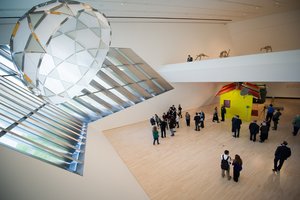Culture is KEY
Author: Makenzie Brown
Culture is a commonly discussed principle that when incorporated correctly, influences cities for the better. What we mean by culture as a good city principle is recognizing diversity and difference within a community, and then giving it a belonging. So many cities home many differing: ethnicity, races, languages, religions, and faiths. Therefore, it is extremely important to be aware of these personality differences and use them to a city’s advantage rather than disadvantage.
An example of a city that has incorporated culture to it’s advantage, is New York City. New York City has used culture to create an identity for itself. The development of ‘cultural activity zones’ taking place in public spaces has enabled the creation of it’s identity. Using spaces (Union and Times Square) to host festivals and active street frontage and face to face engagement and events. Moreover, the creation of museums (The Met) and cultural centers to represent histories, using the past to develop the future. NYC has turn lower level residential housing into shop fronts, theaters (Broadway), and galleries. These are all successful examples of giving culture a place to exist and belong. As a result, New York sustains to be one of the leading cities in the world.
East Lansing, although not similar in size, can follow New York’s lead. East Lansing welcomes students from eighty-two different countries, myself included. I take pride in originating from overseas. From the differences in cultural upbringing between my peers and I, I can teach and be taught. Exposure to cultural differences and environments is educational. Bringing these dimensions to the surface creates an environment for learning and growth to take place- for the city and individual. Education, experience, exposure. Three cultural processes that help shape the individuals we are and thus our effect/ contribution to communities. For East Lansing it is about slowly but surely becoming a community that represents all it’s people by creating ‘cultural activity zones’ in and around campus.
According to the dictionary, culture is defined as “the arts and other manifestations of human intellectual achievement regarded collectively”. Although I do not love this definition, we must take note of the word choice that is ‘collectivity’. Culture as a good city principle, when implemented successfully, it collects all different identities. The collection is the feeder to inclusiveness and connectivity, two significant themes in our understanding of good city principles.
And although here we are holding focus on culture as a good city principle, it is essential not to disregard physical, social, ecological, and spiritual qualities. A great public space cannot be measured by one medium alone, it is the intertwine of these principles, that allow functionality to always trump form. Ultimately, it is the people that are the heart of the city. It is the people that create function within a cities form. The difference is, a good city works to create a form that allows its people to function better. Culture can contribute in coordinating that form. But, it is not enough to only recognize culture in a city, it needs must be supported and integrated into a cities development.
An example of this principle at work: NYC
Back